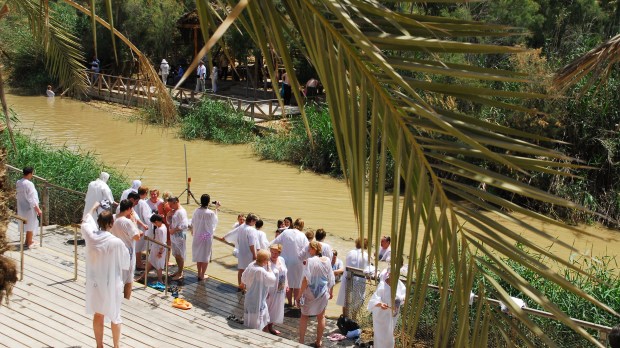On January 18, thousands of Orthodox Christians gathered as they do every year to celebrate the Feast of the Epiphany on the banks of the River Jordan, at one of the places identified as the site of Jesus’ baptism by John.
Known by its Hebrew name, Qasr el-Yahud, the site drew 590,000 visitors last year, a remarkable number considering that the site has one very serious problem: it is sitting on a minefield.
Located in Israel’s West Bank, at the border with Jordan, the site is the third most important pilgrimage site for Christians visiting the Holy Land (the Church of the Nativity in Bethlehem, and the Church of the Holy Sepulchre in the Old City of Jerusalem being the most popular), according to an article at Haaretz.com.
Moshe Gilad, the author of the article, explains that visitors to the site can only take one narrow path in order to skirt the mines left over from the 1967 Six-Day War. The consequences of straying from that path could be deadly: it is estimated, Gilad writes, that there are 4,000 unexploded mines in the area, all laid by the Israel Defense Force.
Tourists have only been allowed to visit Qasr el-Yahud since 2011 when the site was reopened after being closed in 1968. The area is carefully patrolled, and tourists are warned not to wander for fear of setting off decades-old booby-traps.
In addition to the baptism site, the area is home to seven monasteries, including the Monastery of St. John the Baptist, which remain shuttered as they are not safe to visit because of the mines.
Gilad notes that Christian tourism has declined in Israel – in the past it made up about a third of all tourism, and today it accounts for only 20 percent. Until the minefields are cleared many don’t expect these numbers to improve. While there were reports that in 2016 an agreement had been reached between the churches, the Israeli Ministry of Defense, and the Palestinian authority, there has been no progress in removing the mines.
Until the area is made safe pilgrims will to visit Qasr el-Yahud, to plunge into its waters or take holy water home with them, but they will continue to confine their visits to the holy spot by the river, skirting the area’s other important religious sites.

